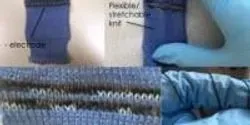News

Graphene, a strong, lightweight carbon honeycombed structure that’s only one atom thick, holds great promise for energy research and development. Recently scientists with the Fluid Interface Reactions, Structures, and Transport (FIRST) Energy Frontier Research Center (EFRC), led by the US Department of Energy’s Oak Ridge National Laboratory, revealed graphene can serve as a proton-selective permeable membrane, providing a new basis for streamlined and more efficient energy technologies such as improved fuel cells.

Whether you're baking bread or building an organism, the key to success is consistently adding ingredients in the correct order and in the right amounts, according to a new genetic study by University of Michigan researchers.

Cod liver oil and willow bark extract used in the tanning of skins for clothing and other products offer notable differences in treatment, a study by a team of scientists shows. Their findings show the promise of a technique that may be used to identify the aging behavior of materials and to examine delicate works of art.

The field of metamaterials is all about making structures that have physical properties that aren’t found in nature. Predicting what kinds of structures would have those traits is one challenge; physically fabricating them is quite another, as they often require precise arrangement of constituent materials on the smallest scales.

When NASA's Magnetospheric Multiscale (MMS) mission launched from Cape Canaveral Air Force Station, Florida, on Thursday, March 12, it delivered a four-spacecraft experiment into Earth orbit that will study an important phenomenon called magnetic reconnection. Aboard each of those spacecraft is an Energetic Ion Spectrometer (EIS) instrument, designed and built by the Johns Hopkins University Applied Physics Laboratory (APL) in Laurel, Maryland.

Vanderbilt University researchers have achieved the first “image fusion” of mass spectrometry and microscopy — a technical tour de force that could, among other things, dramatically improve the diagnosis and treatment of cancer.

A new simple tool developed by nanoengineers at the University of California, San Diego, is opening the door to an era when anyone will be able to build sensors, anywhere, including physicians in the clinic, patients in their home and soldiers in the field. The team from the University of California, San Diego, developed high-tech bio-inks that react with several chemicals, including glucose. They filled off-the-shelf ballpoint pens with the inks and were able to draw sensors to measure glucose directly on the skin and sensors to measure pollution on leaves.














